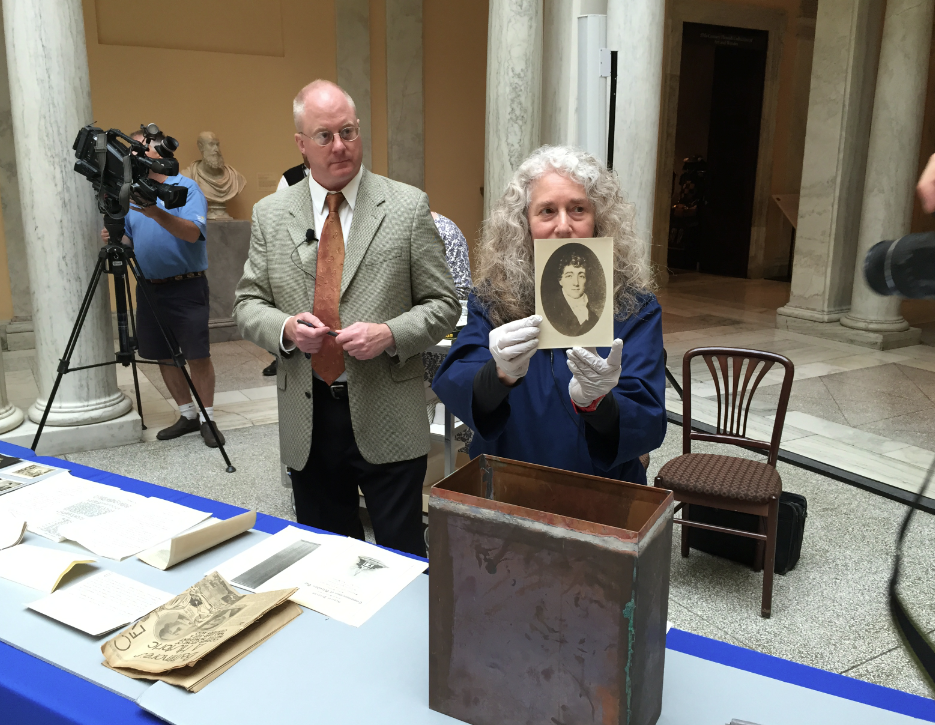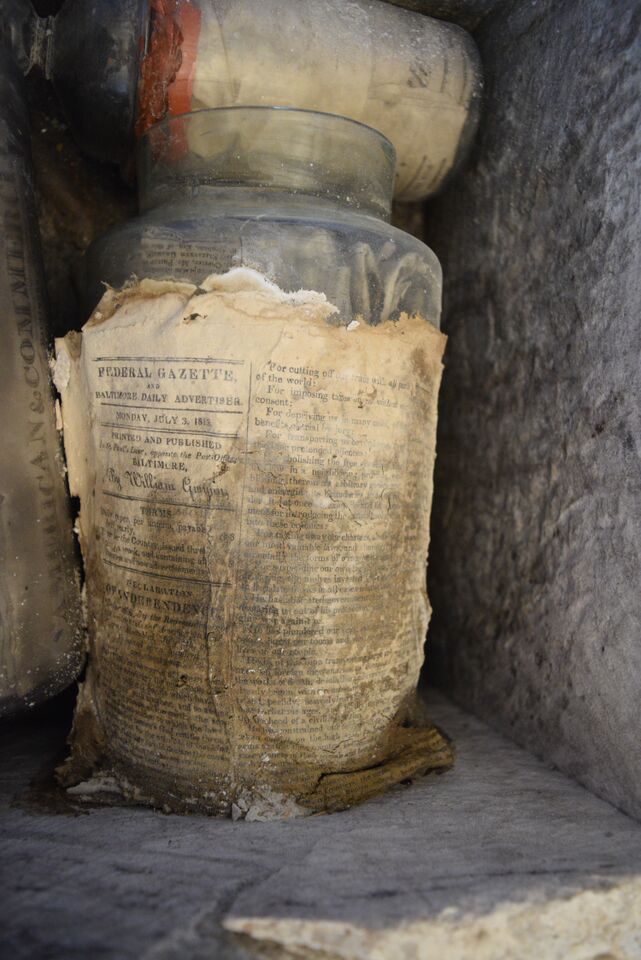
During the recent restoration of Baltimore’s historic Washington Monument, project superintendent George Wilk II discovered not one, but two time capsules.
The monument’s cornerstone—laid July 4, 1815—included a hollowed out well containing artifacts and was spotted by Wilk this winter as the base of the monument was excavated to make room for a septic system. Earlier, this past fall, Wilk found a 1915 time capsule behind a 100-year-old dedication plaque from the monument’s centennial celebration.
“No, didn’t know it was there,” Wilk said as conservators from The Walters Art Museum carefully extracted artifacts from the time capsule Tuesday morning for the first time. “We unbolted that plaque and then I took a cellphone picture in the dark to see what was behind it.”
Highlights found in the 1915 metal time capsule, which had been soldered shut, include an early photograph of the Declaration of Independence, Baltimore newspapers of the time, including a German language paper, the city’s official municipal journal, and numerous artifacts commemorating the 100th anniversaries of the monument, the Battle of Baltimore and the Star-Spangled Banner, including a colorized photo of a “human flag” and a portrait of Francis Scott Key.
The highlights found in 1815 cornerstone well, which had first been opened in February, but had not been fully displayed until today, include three glass jars stuffed with coins and newspapers from the period—which, because they were written on linen paper, have survived relatively intact. Other items are related more directly to Washington, including a portrait and published copy of his presidential farewell address.

Lance Humphries, chair of the Mount Vernon Place Conservancy, noted the two distinct themes in the time capsules.
The 1915 capsule, which included more than 50 items, is largely focused on the commemorating the centennial of the War of 1812 (which ended in 1815), the decisive 1814 Battle of Baltimore and subsequent Defenders Day celebrations, as well as Key’s penning of the Star-Spangled Banner.
The 1815 capsule is much more focused on the country’s newfound independence and the leader of Continental Army during the American Revolution who became the first president of the United States. Baltimore’s monument was the first erected to George Washington in the U.S.
“The artifacts contained in the cornerstone are incredible finds and reveal much about what the Washington Monument represented to those who erected it 200 years ago,” said Humphries.
“They laid a copy of the July 3, 1815 Federal Gazette [one of Baltimore’s newspapers in 1815], which had a copy of the Declaration of Independence on its front page that day, across the three jars they’d placed inside the cornerstone,” Humphries said. “When you pull that out, you literally feel what they were thinking when they placed those items in that cornerstone. I think it’s revealing, too, that the word ‘Memory’ is engraved a bit deeper than all the rest of the words in the inscription on the original dedication plaque.”
*The Mount Vernon Place Conservancy will host a free, all-day fair commemorating the $5.5 million restoration and bicentennial of the Washington Monument this July 4.
* Also in July, artifacts from the two time capsules will go on display at the Maryland Historical Society.

